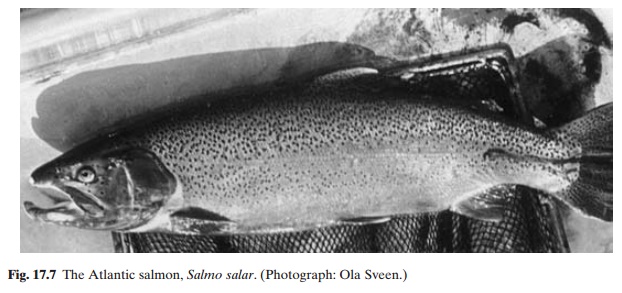Chapter: Aquaculture Principles and Practices: Trouts and Salmons
Culture systems - Salmons
Culture systems
As in the case of trout, much of the earlier efforts at salmon culture
were directed towards transplantation and hatchery production of young ones for
stock enhancement or ranching. It was only in the latter part of the 1960s that
the possibility of growing salmon received commercial attention. The decreasing
price of trout and the high market value of salmon served as major incentives.
Pioneering efforts in Scotland and Norway led to a modern cage culture industry
of the Atlantic salmon, with specialization in egg and smolt production,
grow-out for market fish, processing and marketing of smoked and frozen fish,
feed and equipment manufacture, sales organizations, risk insurance
arrangements, etc. Cage farming has spread to a number of other areas including
Sweden, Iceland, Ireland, North America, Japan, New Zealand and Chile. The
types of cages used for salmon farming have been described, and are very
similar to those used for trout in sea water.

Another system of salmon culture is to grow them in impoundments of the
type described (see fig. 6.32). Because of the high capital involved in such
large-scale operations and the scarcity of suitable sites, this system is not
commonly used. However, floating pen culture is not uncommon in Norway. Pens
are built to enclose about 300–700m2 of the seashore. The management procedures for these pens are very
similar to those for floating cages, except that for harvesting fish, repeated
seining is necessary. Each enclosure can hold about 20 tons of fish, and if at
any time the oxygen levels in the enclosure
Land-based pond or tank systems with supplies of pumped sea and fresh
water are used only for growing smolts of salmon.
Related Topics